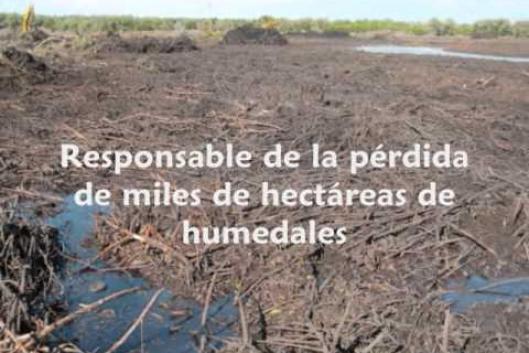Mangroves around the world are suffering from alarming levels of destruction, often as a result of industrial shrimp farming, but also due to other predatory activities such as oil drilling.
And this is why, around the world, communities and organizations are fighting to stop this destruction. One example is the “Mangroves Yes! Shrimp Farms No!” campaign spearheaded by the Redmanglar Internacional network to oppose the destructive activities of companies that establish industrial shrimp farms in the mangrove regions of tropical countries to supply the markets of industrialized countries.
Issue 168 – July 2011
OUR VIEWPOINT
INTERNATIONAL MANGROVE DAY
-
30 July 2011Mangroves are a unique ecosystem hosting incredible biodiversity: migratory birds, marine creatures and reptiles in addition to associated species of flora. They function as a natural water treatment system; as spawning grounds for fish they provide several resources to local communities who directly or indirectly depend upon them for their livelihoods and sustenance. Intact mangroves form a natural coastline buffer against floods, storms or other natural disasters such as tsunamis and hurricanes protecting the coasts from the erosion. Despite all their valuable functions mangroves are threatened by several industrial activities including the expansion and operation of the aquaculture industry, primarily industrial shrimp farming.
-
30 July 2011The capacity of mangroves to store carbon has come to the fore.
-
30 July 2011Mangrove is a thriving and fragile ecosystem that depends on other nearby ecosystems – the river and salt marshes. In turn, the health of the sea and of coral reefs depends on a healthy mangrove. Everything is connected.
COMMUNITIES AND FORESTS
-
30 July 2011The tribal villages of Surma and Golbojhi celebrated their liberation on the occasion of International Labour Day on May 1. The freedom came after 107 years of struggle when the tribals got ownership of the forestland they have been dependent on for centuries. Home to about 450 Tharu tribe families, the two forest villages are situated in the core zone of the Dudhwa National Park in Lakhimpur district of Uttar Pradesh (UP). At a time when tribal areas in the country are in the grip of Naxalism, Surma and Golbojhi got liberation after decades of non-violent democratic struggle without firing a single bullet. The two villages are also the first tribal settlements in the country, situated in a national park, to get benefit of the Forest Rights Act (FRA), 2006.
-
30 July 2011Women of South Asia working in several areas including health, nutrition, livelihood, environment, gathered in Dhaka, Bangladesh on July 2 and 3, 2011, for the Third Annual Conference of SWAN (South Asia Women’s Network), which was dedicated to the theme of “Women of South Asia and the Green Economy”.
COMMUNITIES AND TREE PLANTATIONS
-
30 July 2011The region of Brazil, and perhaps the world, where monoculture eucalyptus plantations and pulp production are expanding most rapidly is in the state of Mato Grosso do Sul, and specifically the micro-region of Três Lagoas.
-
30 July 2011The forestry industry’s endless pursuit of bigger profits has led to the growing homogenization of trees cultivated for timber, pulp and paper production.
DEFINING FORESTS
-
30 July 2011Wikipedia – the free encyclopedia built collaboratively – is an increasing reference even for academic use. We can have a voice there and contend every occasion when monoculture tree plantations are treated as forests. But we can influence also in other fora – radio and TV programs, educational books, informative bulletins, magazines, and so on. Even in informal conversations! Wherever you can. Just be alert! We invite and urge you to make the difference. Let’s put it clear that tree plantations are not forests! For further information on the WRM Campaign on Forests Definition visit http://www.wrm.org.uy/forests.html

